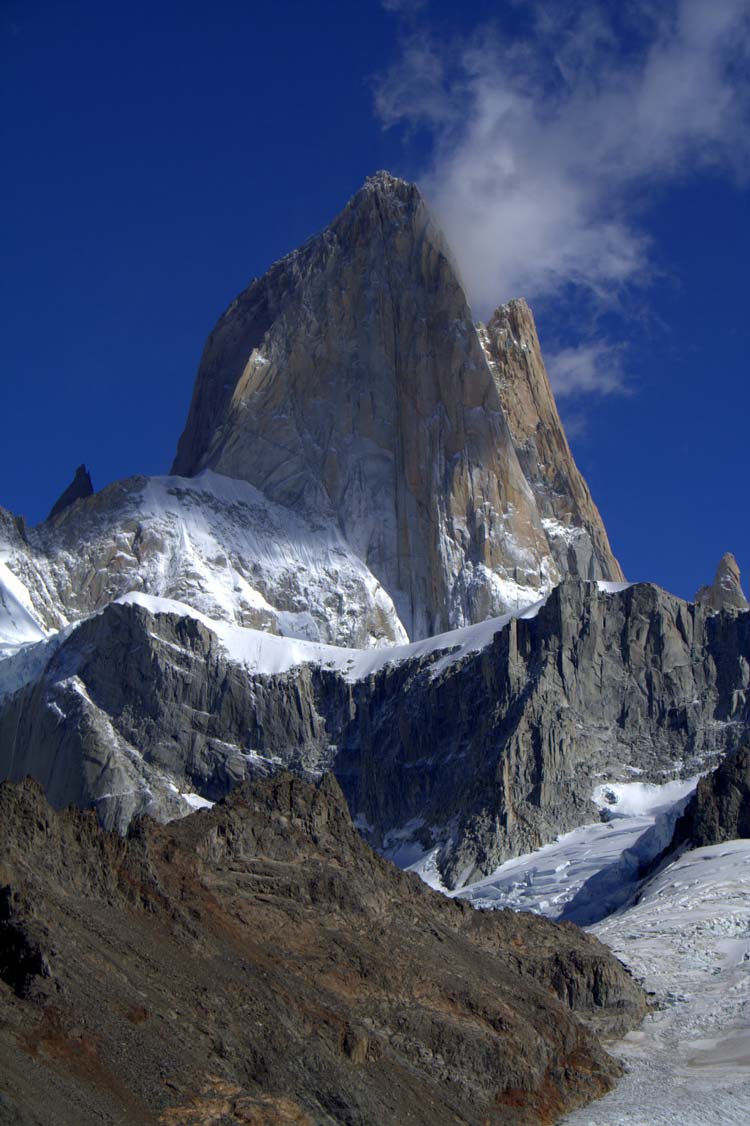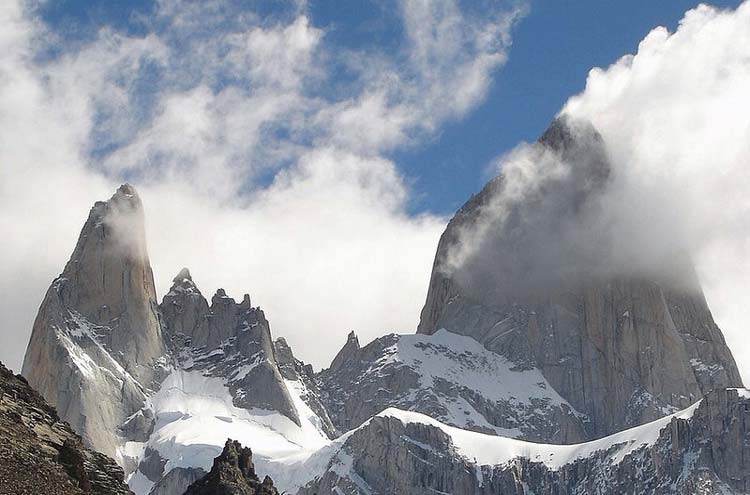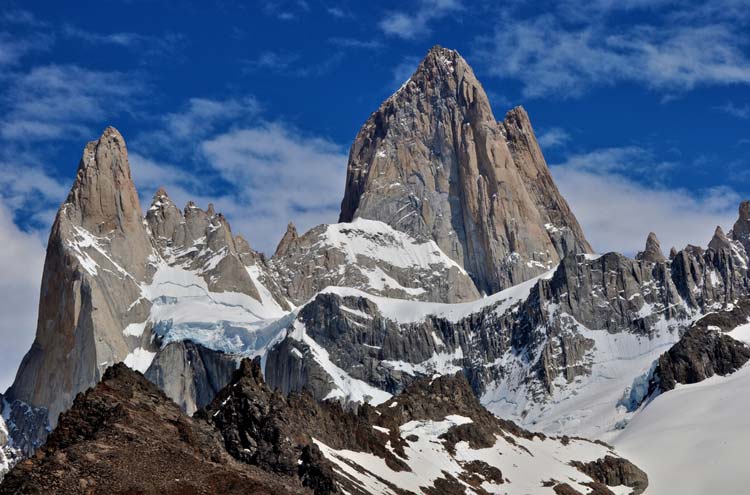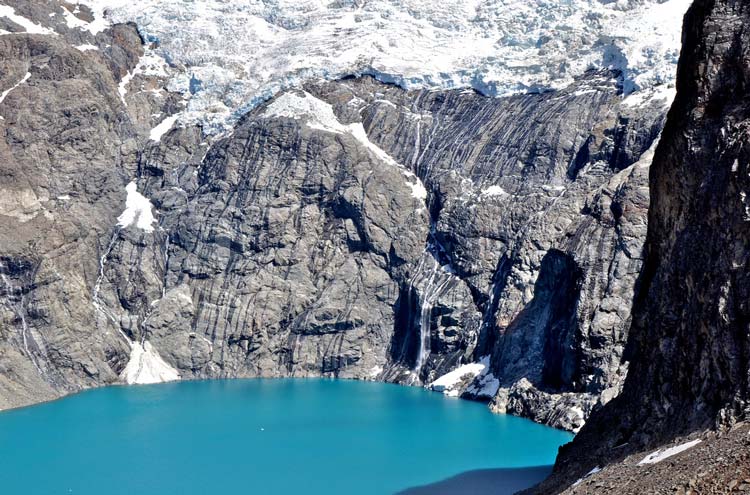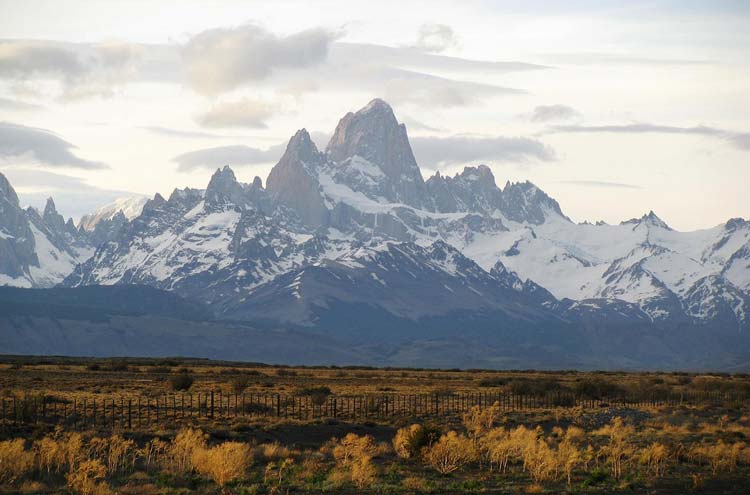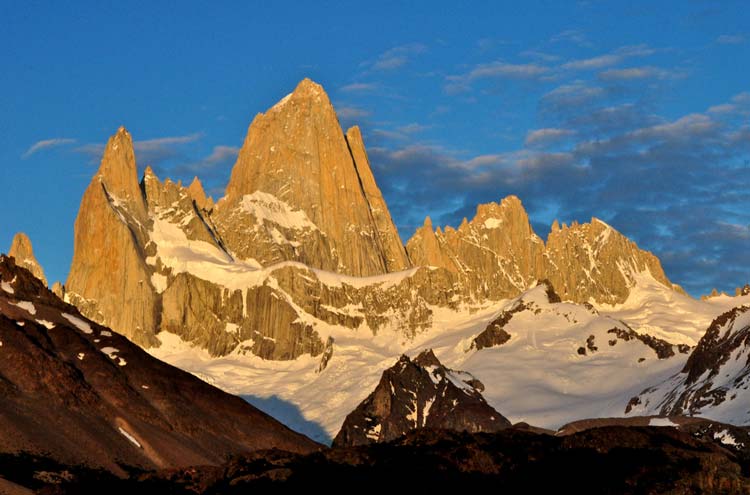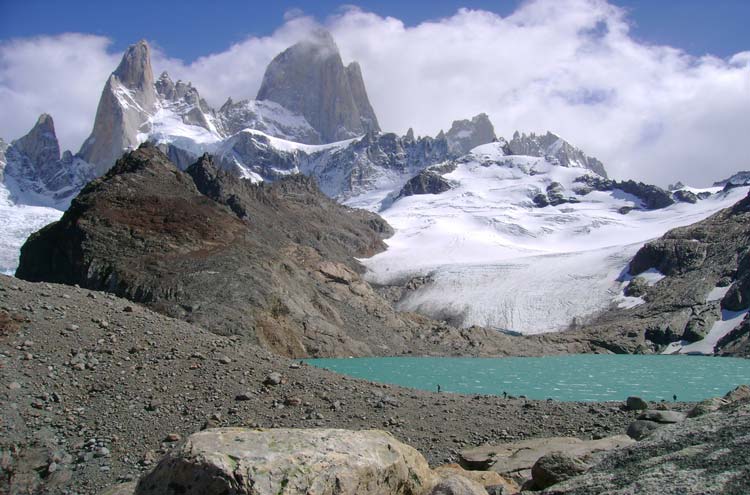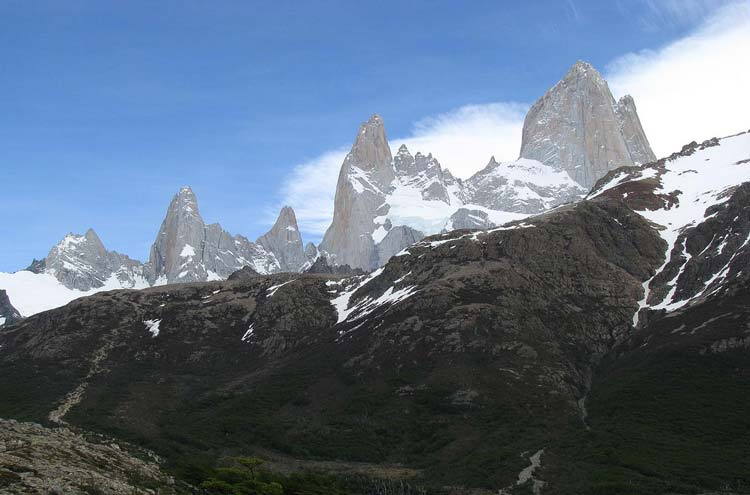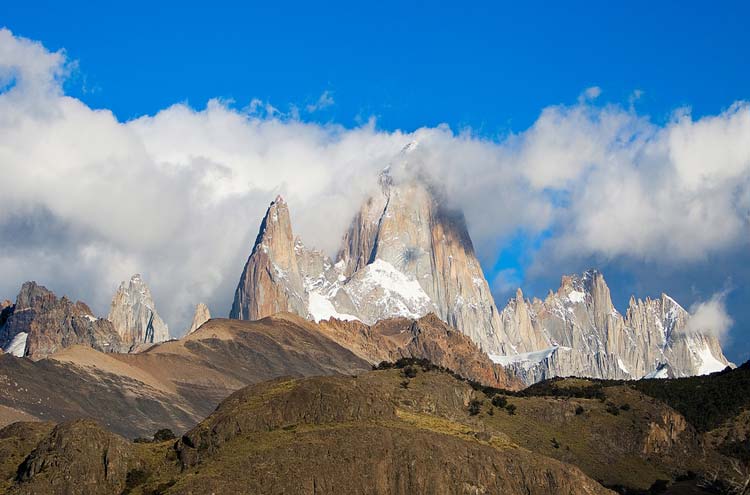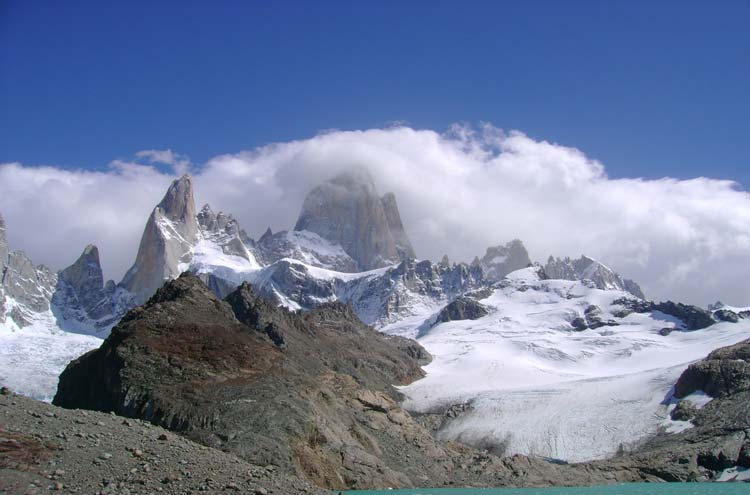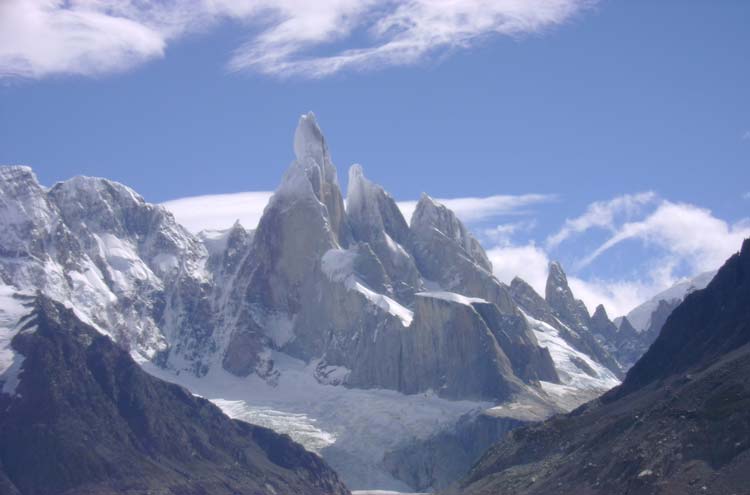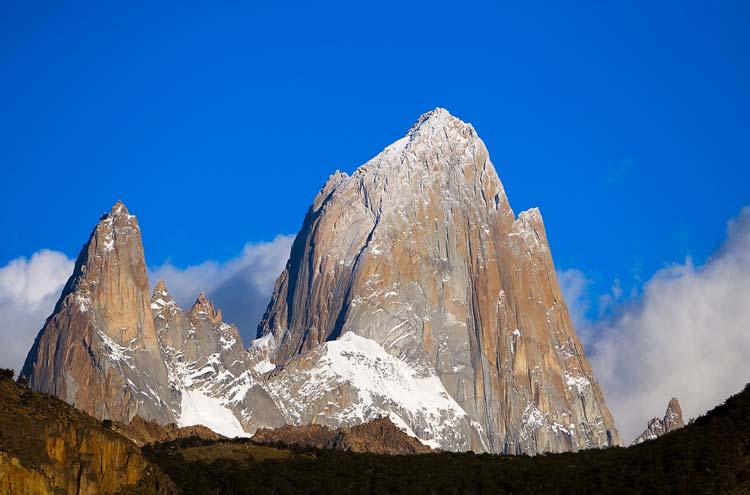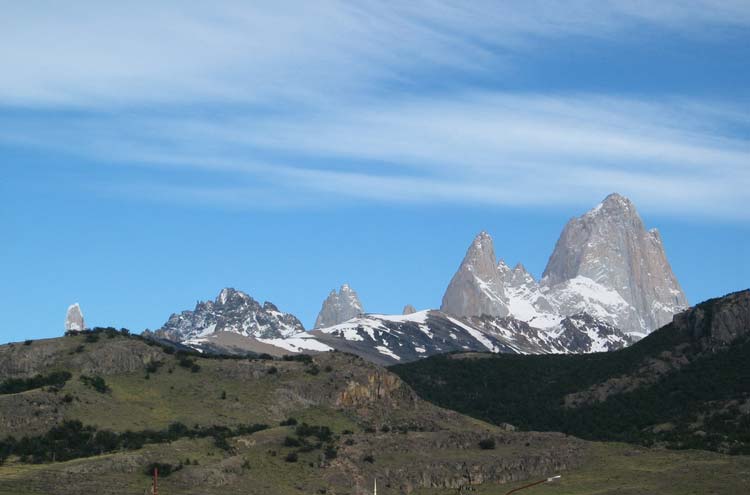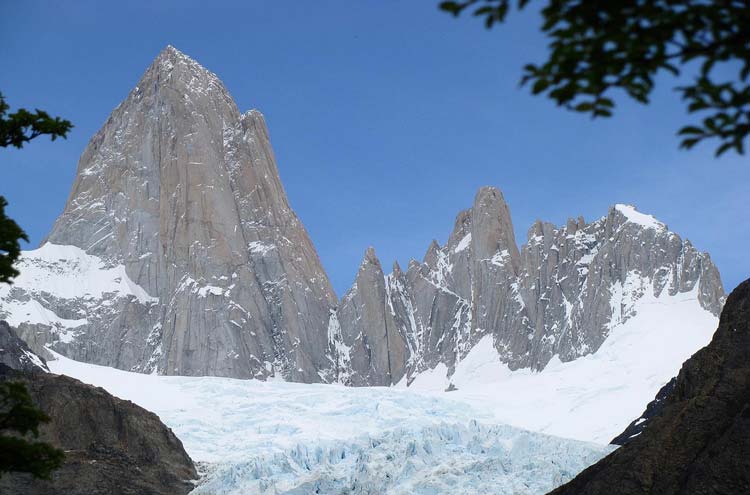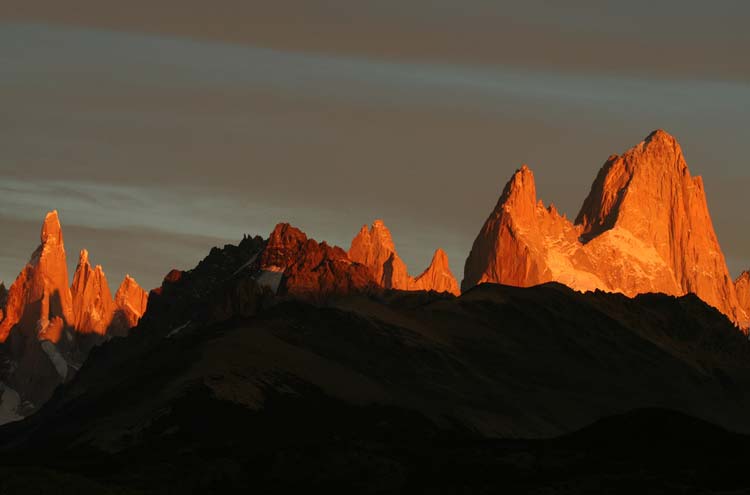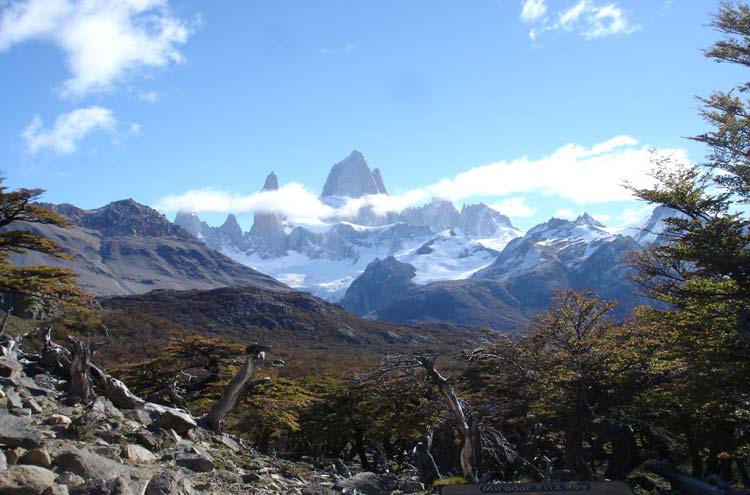Fitz Roy Massif
Key information: Fitz Roy Massif 
- The Fitz Roy Massif is the crowning jewel of the spectacular Los Glaciares National Park, Argentinas finest and a UNESCO World Heritage Site.
- The romance of historic estancias is juxtaposed with vertiginous mountains and awesome nature: panoramas of glaciers, towering granite spires, lakes and Patagonian forest.
- Superb walking into the heart of this magnificent area. Fitzroy treks take in vistas of its eponymous massif, as well as a second (marginally smaller) granite peak, Cerro Torre.
- A vast landscape, isolated and empty except for guanacos (close relative to Llamas) and condors, or the occasional gaucho (local).
- This is wild, remote country and the weather is often horrible. Come well prepared.
Walkopedia rating
- Walkopedia rating89
- Beauty36
- Natural interest18
- Human interest2
- Charisma36
- Negative points3
- Total rating89
- Note: Negs: consistently bad weather.
Vital Statistics
- Length: Variable
- Up to 10 days
- Maximum Altitude: around 1,200m
- Level of Difficulty: Moderate
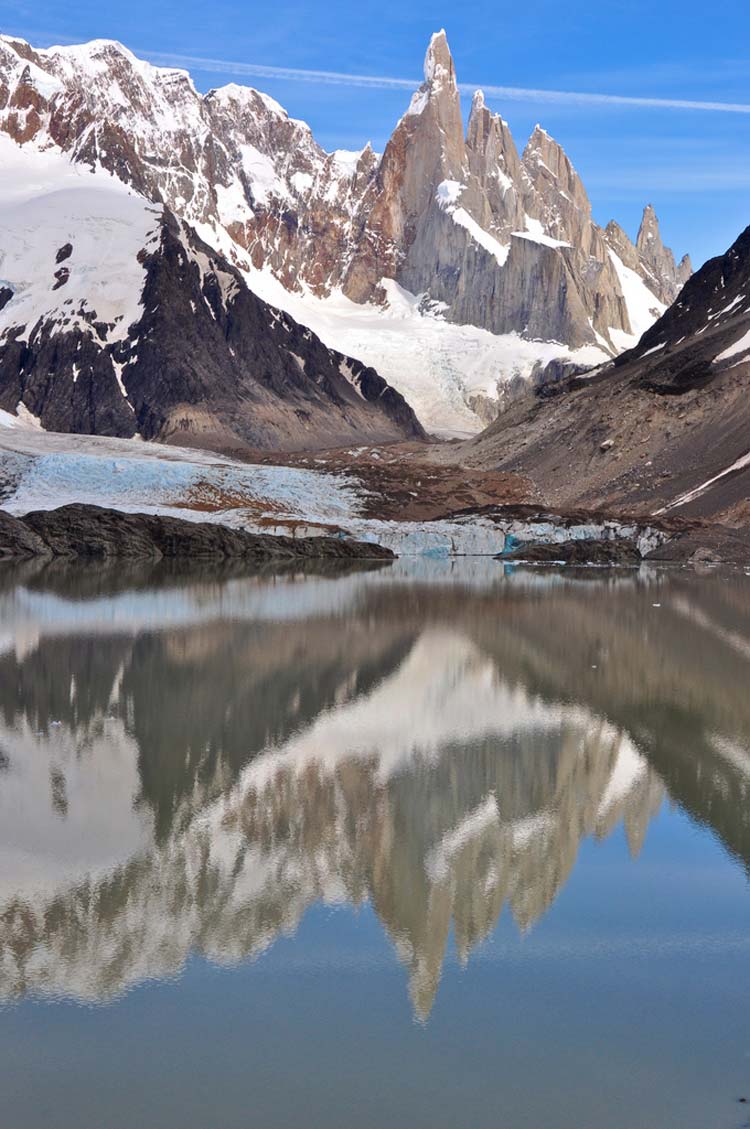
WALK SUMMARY
Los Glaciares National Park, host to the fantastic Fitz Roy Massif, is a UNESCO World Heritage Site and, at 8,500sq miles, of a scale matched only by its grandeur. Approximately a third of its area is covered by ice-fields connecting 47 major glaciers, which sets the area apart as the largest continental ice expanse after Antarctica.
The northern extreme of Los Glaciares is characterized by a range of fantastical spikes, of which Mount Fitz Roy is the most enduring image. A series of jagged, monolithic towers of barren granite thrust into the sky; precipitous cliffs plunge down towards frigid glacial tarns and sparse, indigenous flora.
The range's tallest peak, once known as Cerro Chalten (Smoking Mountain), not as a volcano but for the cloud seen to form around its peak, was renamed in 1877 after the captain of the HMS Beagle, Robert Fitzroy. The dramatic mountain was sighted by his 1834 expedition, sailing up the Santa Cruz River to chart the desolate and isolated Patagonian coast: now, it is symbolic of the Santa Cruz province and iconic to thousands of travellers worldwide.
Los Glaciares' virgin landscape creates pristine vistas wherever you turn, and a marvelous variety of otherworldly terrain makes for breathtaking stuff. Modern international links (El Calafate Airport) and the growth of El Chalten village offer access to Fitzroy like never before.
A Fitz Roy trek will typically incorporate both the Fitz Roy and Cerro Torre base camps (thereafter progress becomes exclusively the domain of elite climbers), while trails go on to navigate myriad lakes and outcrops of hardy vegetation, even ascending a few lesser peaks and approaching Viedma Glacier. Hiking here is truly varied.
The national park offers a frozen, beautiful wilderness. The barren slopes of the 3,405m Fitz Roy Massif seem alien and inhospitable. There is no formal round-the-mountains trek, although you can do this if you are happy with doing some serious glacier walking. The hiking is surprisingly easy, often winding through beech forest between viewpoints. Highlights of a Fitz Roy trek include:
-
Classic Route: An 11km meander across gentle slopes to the foot of inspiring Cerro Torre (3,128m), joining the Rio Fitz Roy en route. Diversion at Laguna Torre brings you to an even better viewpoint before circling back to Camp Jim Bridwell as Glaciar Torre looms behind. The next day traces a path up to high plateau, then winding through the Lagunas Nieta, Hija, Capri and Madre. Overnight at Camp Poincenot, and the following day take two separate diversions: over moraine and boulder-field to a rose-tinted Fitz Roy sunrise at Laguna de los Tres, and a second, wilder and more rugged, to the rarely visited shore of Laguna Sucia below Glaciar Rio Blanco. Then, its 9km or so along Rio Blancos banks and up the Rio Electrico valley. Retrace your steps to Camp Poincenot to return, taking a valley to your left for further rewards in scenery and atmosphere, overnighting in the glorious refuge perched above Laguna Capri and looking out over range, river and glacier to Fitz Roys serrated peak.
-
A Circuit: This can only be done by hikers with experience of glacier-walking, and guided. Follow the classic route as above, continuing on from camp Piedra del Fraile past desolate Laguna Electrico and circling back behind Fitz Roy, and down and around Glaciar Torre, yielding fantastic views of Fitz Roys north face.
Los Glaciares National Park is found in the Santa Cruz province of Argentina, in South America's extreme south. Be prepared for terrible weather: storms are common here, even in summer. The Argentine and Chilean borders detour to pass directly over the summit of Mount Fitzroy, such that Cerro Torre, the region's largest mountain, is actually in disputed territory. The spectacular Torres del Paine National Park is nearby in Chile.
Other accounts: share your experiences
Your comments on this walk, your experiences and suggestions, and your photos are very welcome. Where appropriate, you will be credited for your contribution.
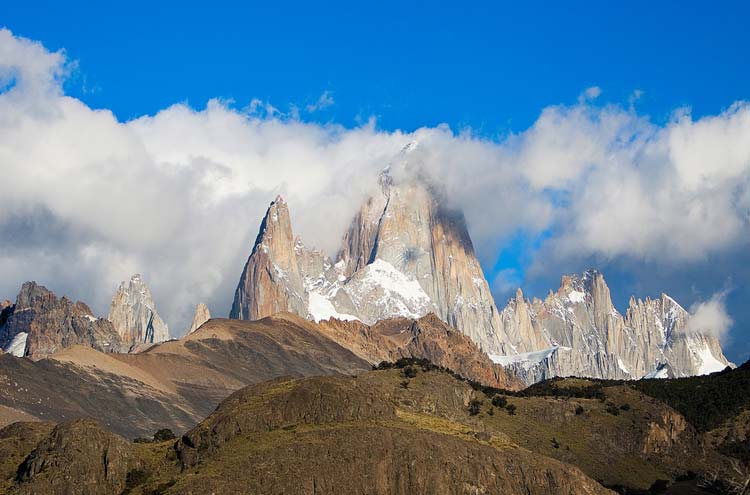
We have a lot of helpful practical information and tips about this walk, covering everything from the best books and maps, to timing and weather, geting there, possible problems, whether you need a guide and where to find them, and useful websites. This section is only open to members.
Membership is FREE AND JOINING TAKES 30 SECONDS. To login or sign up click here
Safety and problems: All walks have inherent risks and potential problems, and many of the walks featured on this website involve significant risks, dangers and problems. Problems of any sort can arise on any walk. This website does not purport to identify any (or all) actual or potential risks, dangers and problems that may relate to any particular walk.
Any person who is considering undertaking this walk should do careful research and make their own assessment of the risks, dangers and possible problems involved. They should also go to “Important information” for further important information.
Anyone planning an expedition to this place should see further important information about this walk.
Safety and problems: All walks have inherent risks and potential problems, and many of the walks featured on this website involve significant risks, dangers and problems. Problems of any sort can arise on any walk. This website does not purport to identify any (or all) actual or potential risks, dangers and problems that may relate to any particular walk.
Any person who is considering undertaking this walk should do careful research and make their own assessment of the risks, dangers and possible problems involved. They should also go to “Important information” for further important information.
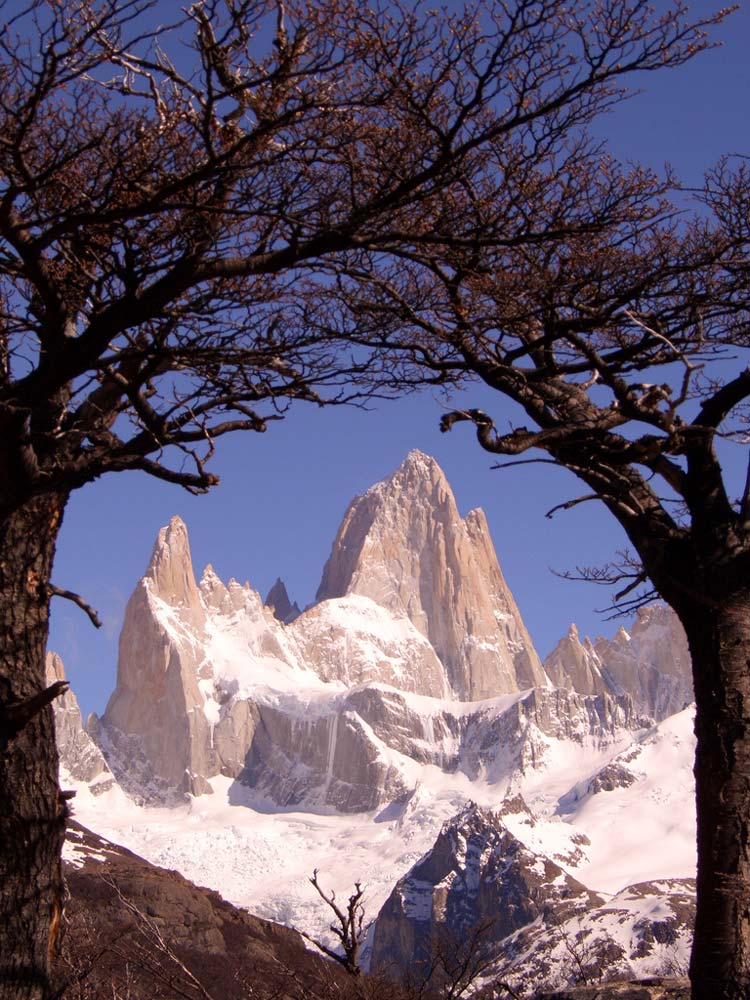
OTHER ACCOUNTS
share your experiences
Add your experiences, suggestions and photos. We would be delighted to receive your writing and ideas (which will be attributed appropriately where published).
Anyone planning an expedition to this place should see further important information about this walk.
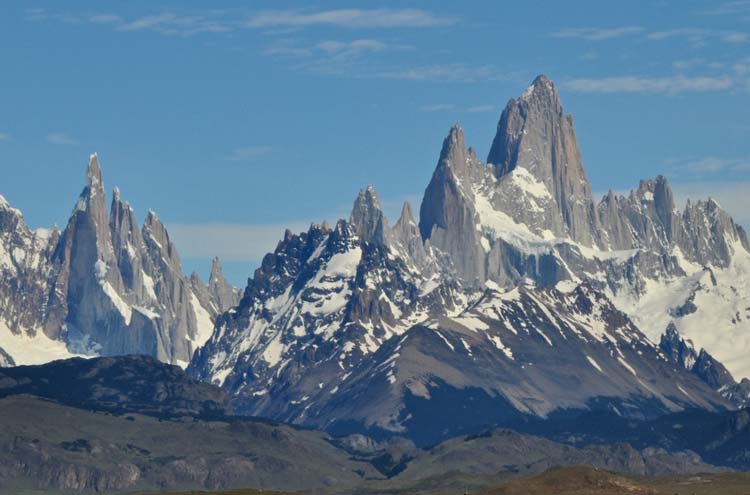
Responsible travel matters, a lot. How you travel will make a real difference - for better or worse. PLEASE consider this when making plans. Read more



